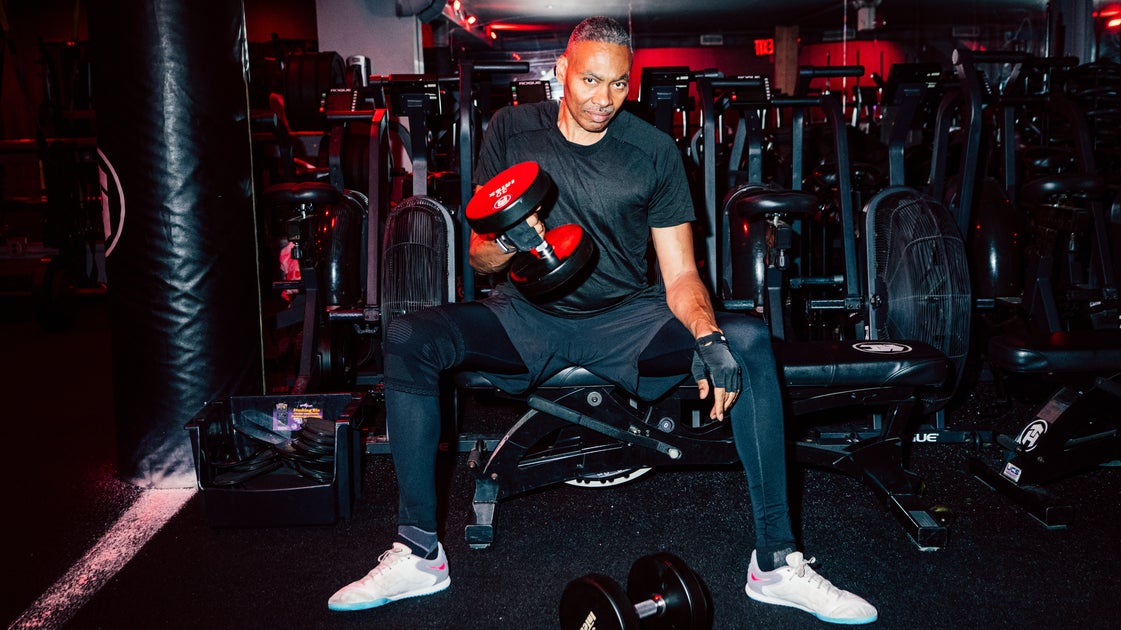The most pervasive myth about aging in our culture is that your body is winding down and the best you can do is manage the decline with grace. People love to say you should slow down, take it easy, and swallow the bitter pill of mortality without a lot of fuss. And by people, I mean the wellness-industrial complex and their cadre of barely postpubescent personal trainers who lower the weights if you tell them you’re over 30.
Meanwhile, at Tone House gym in New York City, Mickey Crawford, a 61-year-old substance abuse counselor, is dragging a 115-pound weighted sled across the floor while his coach, Alonzo, secretly covertly sandbags. Afroditi Lishman, a 52-year-old New Yorker, is sprinting and bear crawling her way past 20- and 30-somethings.
And this is just the warm up.
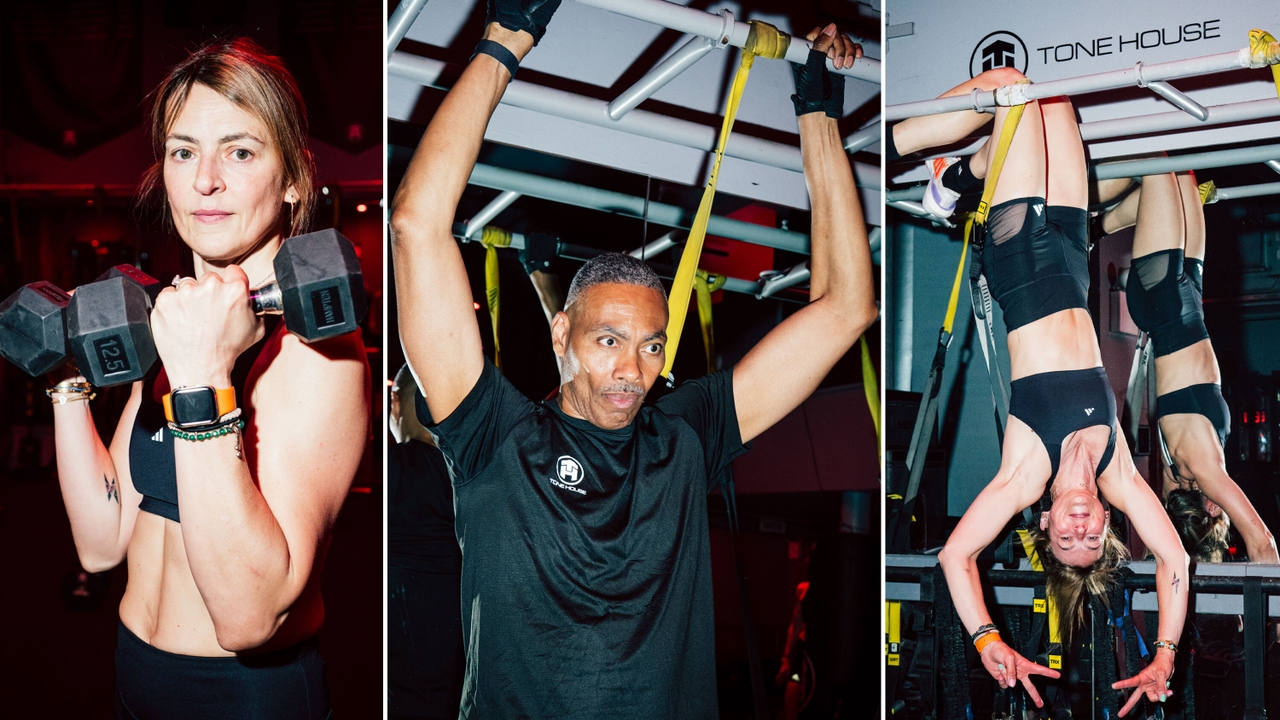 (L-R) Afroditi Lishman and Crawford lifting weights and doing arm and leg exercises on the bar at Tone House.
(L-R) Afroditi Lishman and Crawford lifting weights and doing arm and leg exercises on the bar at Tone House.
Illustration: HuffPost; Photo by Jutharat Pinyodoomnyachet for HuffPost
Tone House, a sports-performance studio in New York’s NoMad district, is infamous for its brutal conditioning workouts. Think pro football training meets bootcamp with a “You can do it!” ethos. Founder Alonzo Wilson built it to make elite training accessible. It’s become a kind of accidental laboratory for debunking bullshit ideas about aging and what older people can do, physically and mentally.
Because here’s the real story: Aging isn’t about decline. Or at least, it’s not just about decline — not unless you’re actively neglecting your mind and body. Or, you know, actively being neglected by a medical and cultural system that treats older adults like they’re doddering and breakable.
 “It’s my therapy,” Lishman says. “Training is a great booster to one’s confidence, mentally. That’s one of the main reasons why I work out.”
“It’s my therapy,” Lishman says. “Training is a great booster to one’s confidence, mentally. That’s one of the main reasons why I work out.”
Jutharat Pinyodoomnyachet for HuffPost
“It’s ageism,” says Teresa Liu-Ambrose, a physical therapy professor and Canada Research Chair in healthy eating at the University of British Columbia, when I ask her about the idea that people over a certain age should only do easy workouts. “And a misconception,” she adds.
Liu-Ambrose should know. She’s been studying aging for decades. Her Brain Power Study, published by the Archives of Internal Medicine journal in 2010, found that older women who lifted weights once or twice a week for a year improved their executive function. Even seniors showing early signs of cognitive decline saw better outcomes from resistance training than those who didn’t lift.
In other words, lifting weights helps your brain. And this, in turn, is crucial for overcoming the mental hurdle that rewriting the cultural script about aging and exercise requires.
Crawford, for example, spends his work days helping people. “All day long, I listen to other people’s problems and try to help them out,” says Crawford. “The gym is my outlet. Training helps me do my job. I’m a lot calmer, I’m a lot more empathetic.”
Lishman agrees. “It’s my therapy,” she says. “Training is a great booster to one’s confidence, mentally. That’s one of the main reasons why I work out.”
The mental clarity Lishman and Crawford are finding isn’t anecdotal. Liu-Ambrose has seen it in fMRI scans and cognitive tests. “After targeted exercise training, you can see actual… changes in brain function and also an increase in volume,” she says. That’s right. Lifting weights doesn’t just make your muscles bigger, it makes your brain healthier.
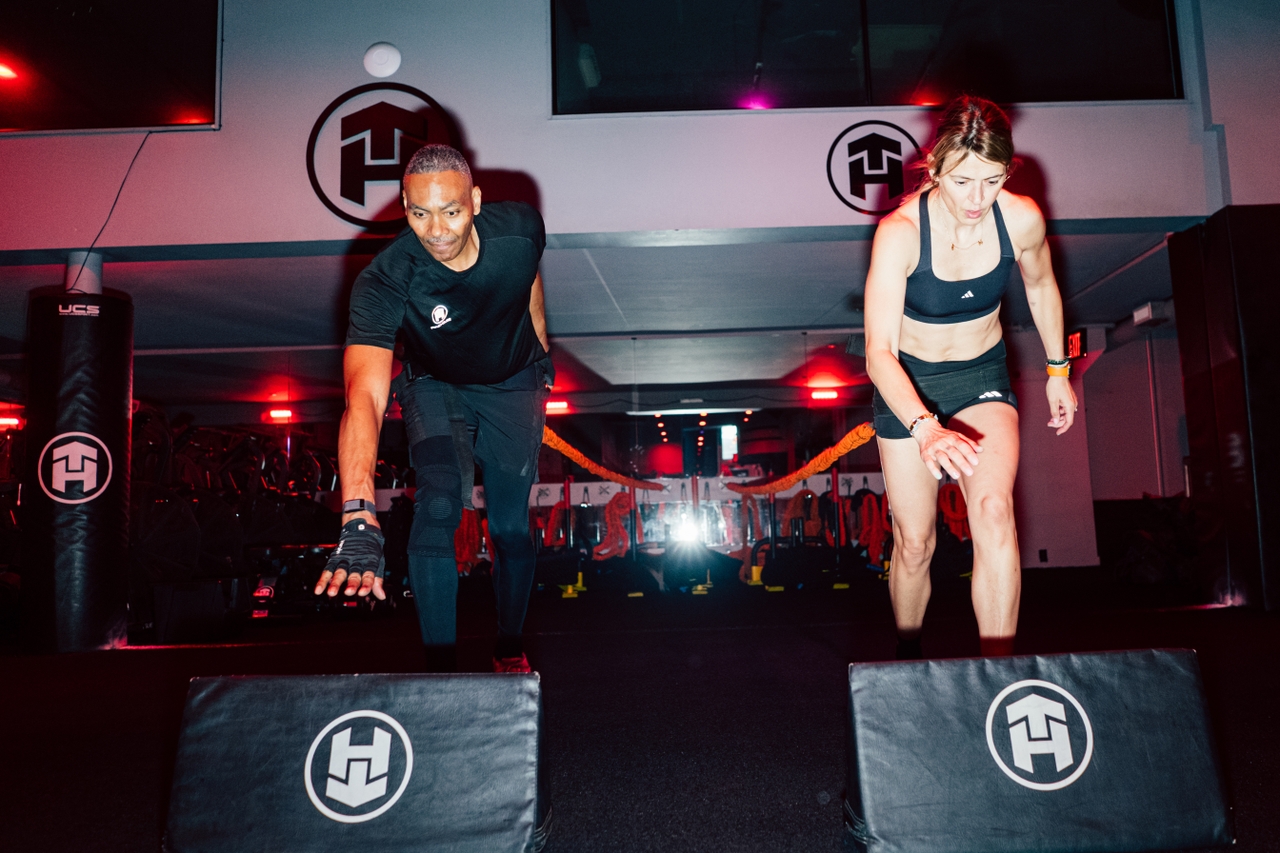 Crawford and Lishman performing agility drills.
Crawford and Lishman performing agility drills.
Jutharat Pinyodoomnyachet for HuffPost
So if you’re worried about cognitive decline, working out is a no brainer. Most of us want to maintain the health of our bodies and brains as we get older, but we’ve also sort of collectively accepted the idea that we will all get weaker as we age. What if that’s not universally true?
Crawford, for example, says that he is now capable of things he wasn’t when he was “in his prime.” These days, he runs three miles after work. “Once upon a time, you couldn’t get me to run one mile,” he tells me. Twenty years ago, Mickey hated running. He tried cross country in high school and detested it. “Now,” he says, laughing, “I somewhat enjoy it.”
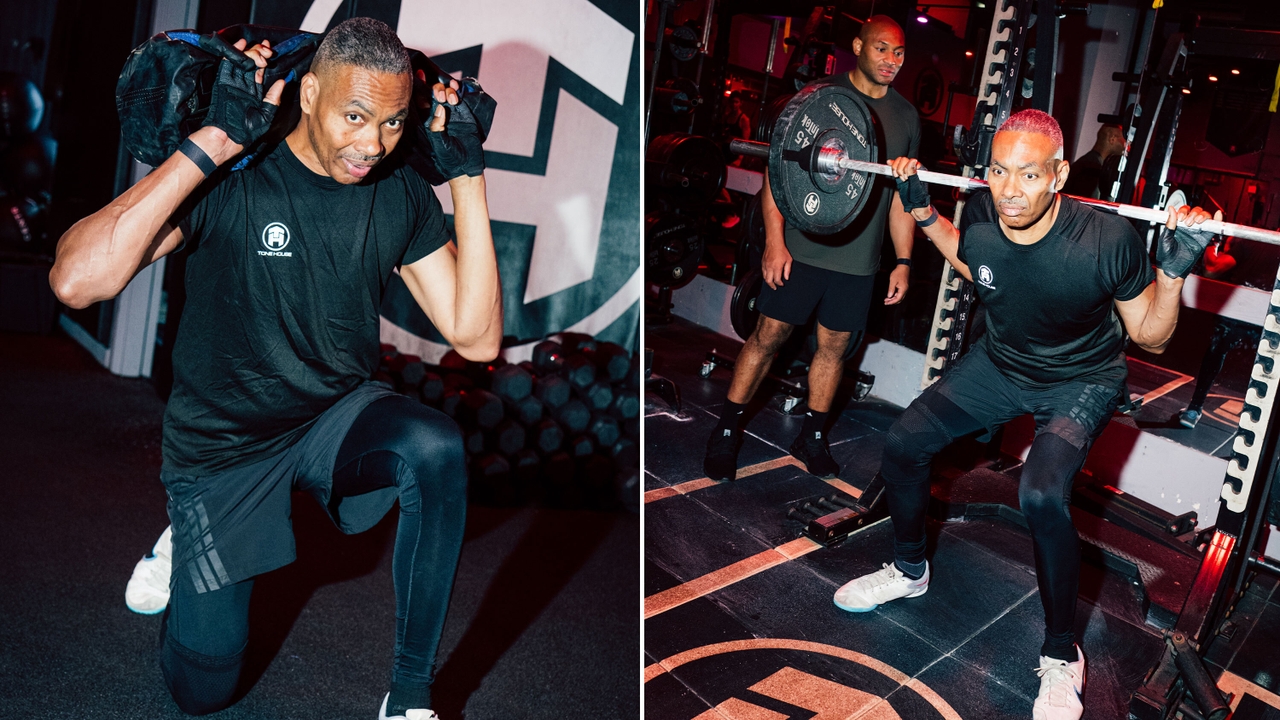 On the left, Crawford performs weighted walking lunges, and on the right, Tone House Founder Alonzo Wilson coaches Crawford on a barbell back squat.
On the left, Crawford performs weighted walking lunges, and on the right, Tone House Founder Alonzo Wilson coaches Crawford on a barbell back squat.
Jutharat Pinyodoomnyachet for HuffPost
The point is not that Crawford learned to love something he used to hate, it’s that he learned to do things that improve his health even if they aren’t his favorite activities. And not just in a perfunctory way, either. Crawford is considering running the New York Marathon in 2026.
And Lishman says her ideas about what it means to get stronger have changed, too. “I’ve gained a new mindset,” she says. “Real growth comes from being uncomfortable — and still pushing forward.”
But no one’s being reckless. In fact, the smartest people in the room at Tone House, the 50+ crowd, have an especially nuanced sense of limits. “I know when to push and when to stop and when to recover,” Lishman tells me. “I push myself, but I know when it’s time to take a step back and not try to compete with anyone but myself.”
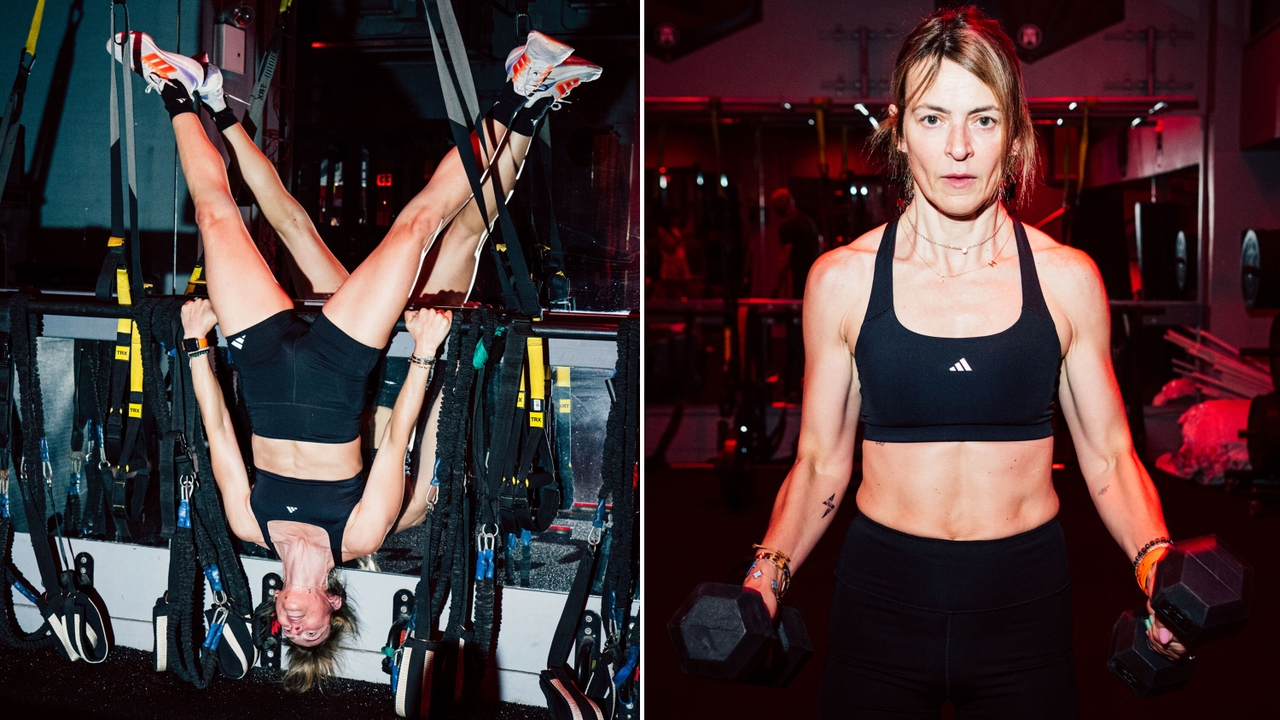 Lishman says her ideas about what it means to get stronger have changed, too: “I’ve gained a new mindset.”
Lishman says her ideas about what it means to get stronger have changed, too: “I’ve gained a new mindset.”
Jutharat Pinyodoomnyachet for HuffPost
That hard earned wisdom is one of the beautiful ways that aging can make you more adaptive when it comes to training. And it’s exactly what Liu-Ambrose calls “smart progression,” training hard, but with purpose and adaptation. “Too quickly, too hard, and thinking that more is better is what gets people hurt,” she says. “Instead, you reassess every few weeks. If it’s easy, you increase the load. Your body responds.”
What most people, of any age, fear about intense workouts is getting injured. No one here is naive about the reality of injury. Lishman, for example, trains with two torn menisci and a labrum tear. “I have many injuries,” she says. “But I know how to work around them.” A few days after a tough deadlift session, she noticed her right side, where she has scoliosis, felt tight. So she took a day off. Ten years ago, she says there’s no way she would have missed a workout.
That kind of responsiveness — not pushing through pain, but also not shrinking from challenge — allows Lishman to keep training. “Closer to your 50s, you realize you don’t need to do eight workouts a week,” she says. “You just need to focus and go with a purpose. Do the one that challenges you, and then step back.”
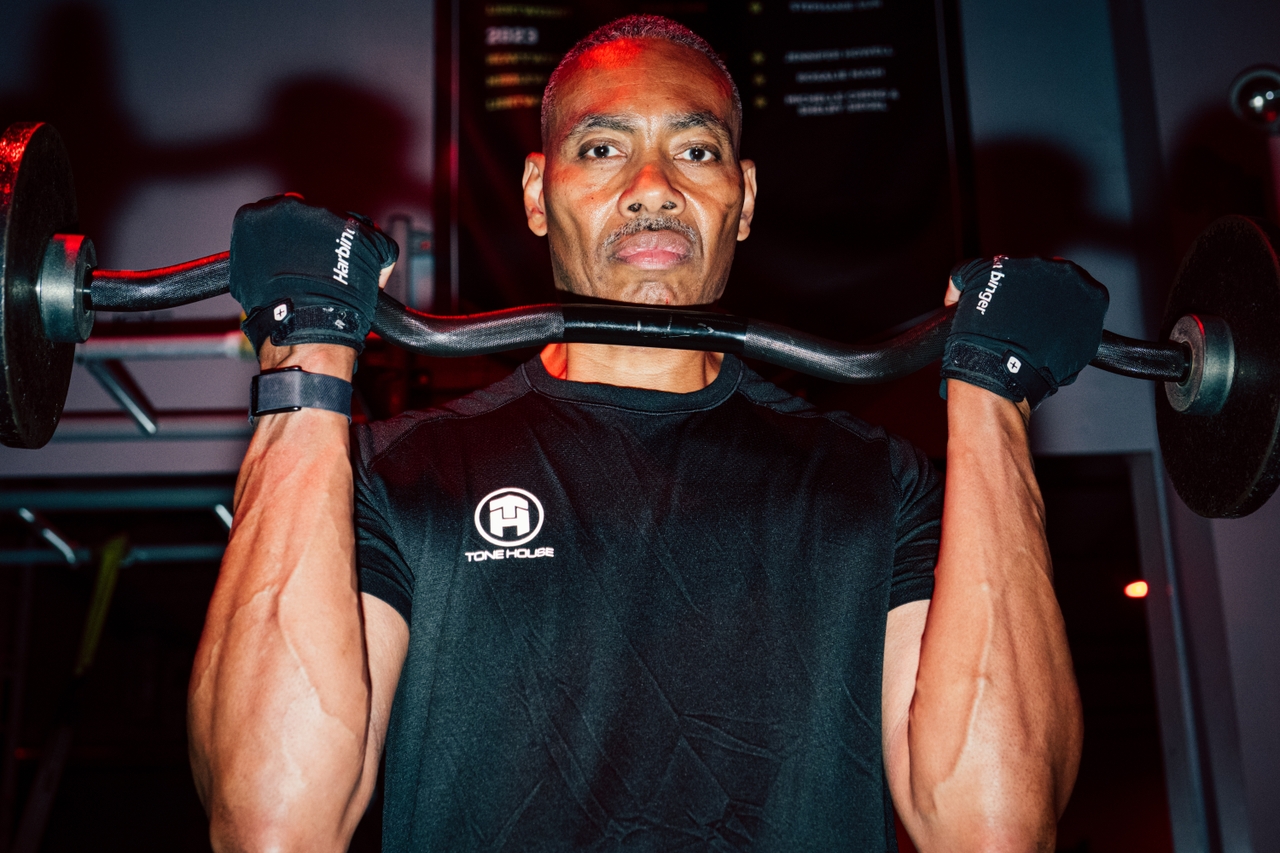 Getting stronger after 50 isn’t a miracle. It’s a practice. And, as Crawford says, “If you think you can’t do it, you can’t do it. If you think you can do it, you can.”
Getting stronger after 50 isn’t a miracle. It’s a practice. And, as Crawford says, “If you think you can’t do it, you can’t do it. If you think you can do it, you can.”
Jutharat Pinyodoomnyachet for HuffPost
This isn’t just good judgment. It’s the foundation of long-term strength. Liu-Ambrose has seen it play out again and again in her research. In one of her early studies, she tells me, she worked with older women who already had osteoporosis or osteopenia — conditions that compromise bone health. In case you aren’t aware, bone density issues disproportionately affect older women. Women have lower bone density than men to begin with, and bone loss speeds up with the hormonal shifts that come with menopause. Through carefully designed, progressive resistance training, the women who participated in Liu-Ambrose’s study didn’t just preserve function ― they improved it.
“We had participants tell us that they hadn’t been able to take a bath for years,” she says. They were simply not strong enough to get down into the tub and back out again. “We saw a lot of transformation,” says Liu-Ambrose.
That kind of transformation is mental and physical, but it’s also social. “It’s not just Tone House the workout, it’s Tone House the community,” says Crawford.
Lishman agrees. “I’m going to five different weddings this year, and they’re all Tone House people,” she says. Through fitness, Crawford and Lishman have found belonging across age, ability, and even generation. “My 20-year-old son goes, ‘It’s a family affair,’” Afroditi says.
That sense of family and community matters. “Socializing, in itself, is a cognitive task,” Liu-Ambrose says. “Exercise is good, but when you add social interactions to it, it magnifies the benefits.”
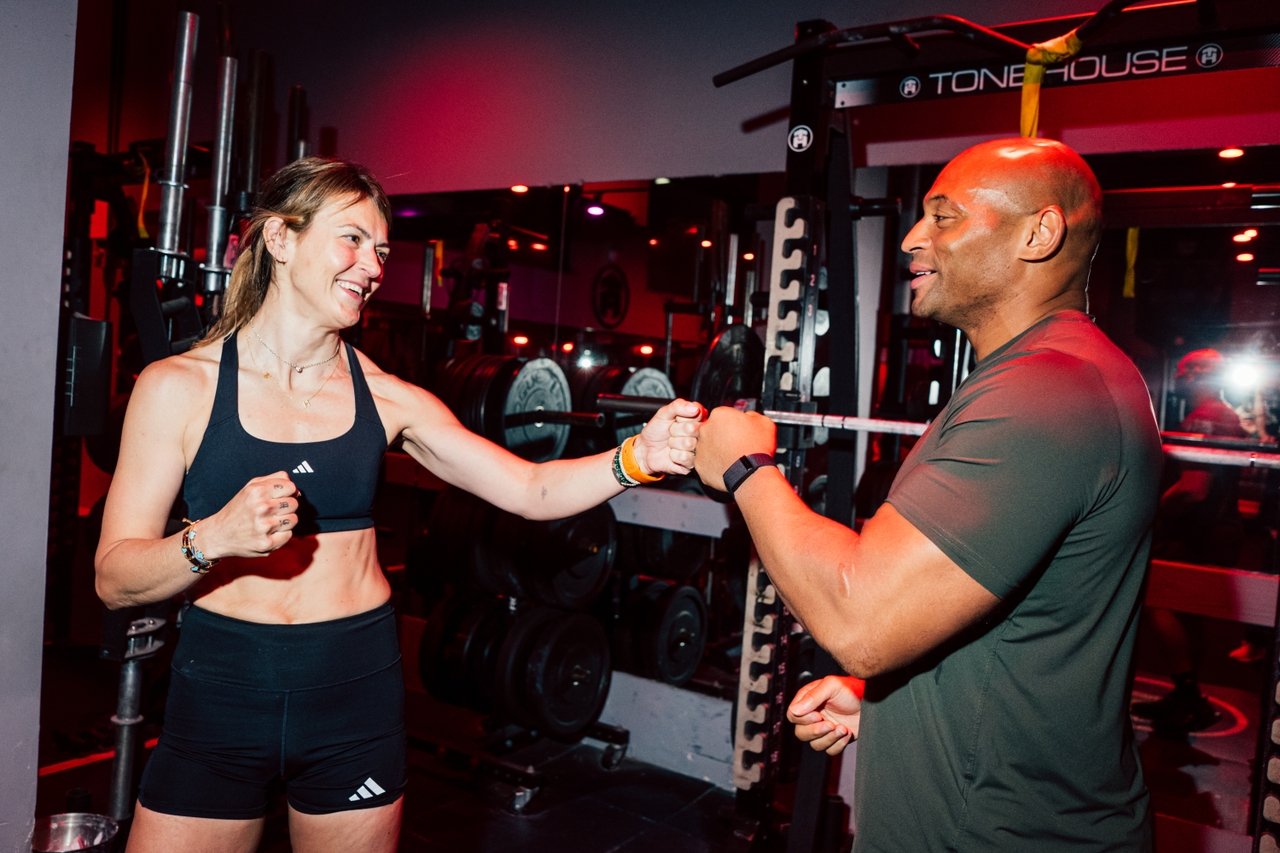 “Closer to your 50s, you realize you don’t need to do eight workouts a week,” Lishman says. “You just need to focus and go with a purpose. Do the one that challenges you, and then step back.”
“Closer to your 50s, you realize you don’t need to do eight workouts a week,” Lishman says. “You just need to focus and go with a purpose. Do the one that challenges you, and then step back.”
Jutharat Pinyodoomnyachet for HuffPost
And community is what will motivate you and keep you coming back, even if you’re pushing into over the hill territory. “You are never too old to start,” Afroditi says. “Start where you are, meet your body where it is. Don’t compare yourself to others.”
“You can handle it. Find you. Find your community,” Crawford adds.
Most of us don’t want to age the ways capitalism is selling. Our choices for old age seem to be either slowly withering into an armchair or desperately clinging to youth. But that’s not real. Crawford and Lishman aren’t superhuman. They’re just not buying what anti-aging culture is selling. They’re lifting heavier. Running farther. Thinking more clearly. And maybe most importantly, they’re not doing it alone.
Getting stronger after 50 isn’t a miracle. It’s a practice. And, as Crawford says, “If you think you can’t do it, you can’t do it. If you think you can do it, you can.”
